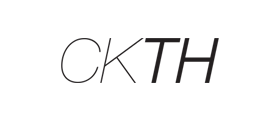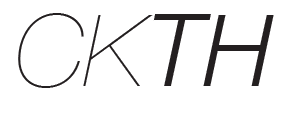[Are seafood ecolabels all they’re cracked up to be?]
BY JORDAN DINARDO

Arguably, the information around many seafood ecolabels is scrambled, at best
As a “seal of approval,” seafood ecolabels help to identify products that are deemed to have fewer negative impacts on the environment than functionally or competitively similar products.
When they were first introduced to the market in the 1990s, they were seen as a market-incentivized approach to support the sustainability of fisheries. While each seafood ecolabel may differ slightly in their standards, a majority of them boil down to ensuring: 1) The target species caught is not overfished 2) methods used by the fishing company to source the product have minimal impacts on other species (bycatch) and the environment; and 3) effective management is in place that the fishing company is in compliance with. Third-party certifying assessment bodies will use the specific standards set by a given ecolabel company to assess whether a prospective fishing company meets the defined standards.
Upon approval, this company is awarded the consent to display the respective “seal of approval” on all their seafood products and consequently the producer can sell the products at a premium. That being said, the big question that comes to mind is: have ecolabels delivered on what they’ve promised. Not surprisingly the answer is quite muddled.
Like with any project, there are multiple ways to measure success that vary in scale and perspective, and ecolabels are no exception. Several studies have assessed the effectiveness of seafood ecolabels, all of which span the full spectrum of opinions. The World Wildlife Fund (WWF) assessed various seafood ecolabels against a set of criteria that evaluate the ecolabels’ effectiveness in addressing the health of fisheries and oceans. These criteria focus on the governance, structure and procedures of the ecolabel company itself (standard setting structure and procedures and accreditation and certification structure and procedures) as well as the standards set by the ecolabel company in relation to ecological sustainability, fishery management systems, and traceability.
Results from this quantitative assessment (Figure 1) indicate 4 out of the 7 ecolabels assessed received a score of 50% or more, with Marine Stewardship Council (MSC) receiving the highest score of 95.63%. While MSC ranked highest, WWF explains that no ecolabel is absolutely perfect and there is room for improvement across ecolabel companies to improve effectiveness. Also, it is important to note that this assessment was aimed primarily at the compliance of various ecolabels towards addressing the impact of fishing on the marine environment and at identifying ecologically sustainable fishing and management systems. Other impacts such as carbon footprint, environmental impacts of production, social issues and animal welfare are described only qualitatively and thus not incorporated in these scores (WWF 2009).

Figure 1. Seafood Ecolabel scores against WWF criteria
Gutierez and Thornton (2014) were particularly interested in the success of ecolabels as it relates to consumers. A long-standing debate exists over the extent of consumer demand for sustainable (ecolabelled) seafood. To investigate the model of seafood ecolabelling in promoting sustainability Gutierrez and Thornton (2014) conducted a detailed case study on consumer awareness of seafood ecolabels using interviews and surveys in Washington D.C. (U.S.) as well as in Oxford and London (UK). Results from this study indicated consumers had often seen one or more seafood eco-labels, including the MSC label. In Washington D.C only 17.4% of respondents recognized the MSC label while 27.5% of respondents in London recognized the MSC label. These results are fairly consistent with MSC’s surveys conducted in 2012 (21% and 31% of respondents in the US and UK, respectively) (MSC 2012) and less than MSC’s survey conducted in 2020 (27% of respondents in the US), in terms of proportion of respondents who were familiar with their label (MSC 2020). Gutierez and Thornton (2014) also investigated the impact of information on willingness to pay and found that respondents who were educated on the MSC label were more willing to buy an MSC product than those who were not educated, despite income and frequency of seafood purchases.
I have been especially intrigued by the success of ecolabels from the consumer angle and question some of the assumptions ecolabels rest on, particularly consumer awareness and willingness to pay for sustainable (ecolabeled products). When you are out shopping for seafood, do you notice these ecolabels I’ve mentioned? Do you trust ecolabels? Do you use ecolabels to inform your purchase? Are you willing to pay more for these sustainable seafood alternatives? Food for thought.
The author of this article, Jordan DiNardo, resides in San Diego, CA and is pursuing a PhD in related matters via UCSD
References
- World Wildlife Fund International (WWF). 2009. Assessment of On-Pack, wild-Capture Seafood Sustainability Certification Programmes and Seafood Ecolabels. Zurich: WWF International Marine Program.
- Gutierrez A, Thornton TF. Can Consumers Understand Sustainability through Seafood Eco-Labels? A U.S. and UK Case Study. Sustainability. 2014; 6(11):8195-8217. https://doi.org/10.3390/su6118195
- MSC. MSC Consumer Survey 2012; MSC: London, UK, 2012.
- MSC. The Rise of the Conscious Consumer; MSC: London, UK, 2020.



![EXPERIMENTS IN LIQUID, LIGHT, AND SOUND [FEAT] EROS SURYA](http://ckth.com/cdn/shop/articles/eros-A1F7B977-1.jpg?v=1723758915&width=480)